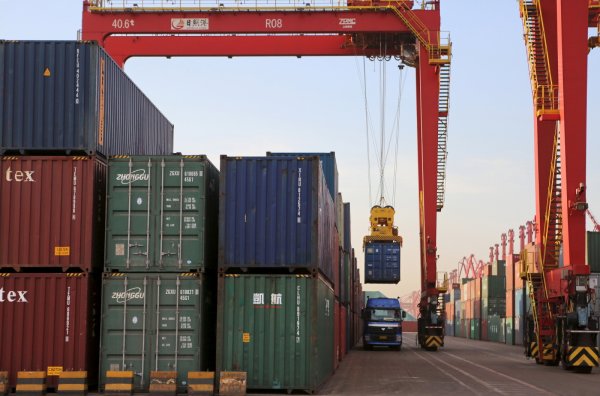
Chinese exports in January rose nearly 8 percent from the same period a year ago, reflecting a revival in global demand. The rise in exports was better than expected while imports zoomed 16.7 percent, helped by improved domestic appetite for coal, crude oil and iron ore.
The rise in Chinese exports has come in after the election of Donald Trump as the US president spooked Asian manufacturing countries as the spectre of trade protectionism loomed large.
A Reuters poll had shown January shipments would reocrd a 3.3 percent rise. Shipments from the world's largest exporter had fallen overall 7.7 percent in 2016. It was severest slump in exports since 2009 as the the growth engine of the world has been recording sluggishness over the past several quarters.
Exports to US
Shipments to the United States, China's largest export market that accounts for 18.5 percent of its total exports, rose 6.2 percent in January.
However, analysts warned that January data may have been distorted by the early arrival of the Lunar New Year this year. "The earlier arrival of Lunar New Year this year by almost a week seems to have encouraged more activity concentrating in January," Raymond Yeung, chief greater China economist at Australia & New Zealand Banking Group Ltd. in Hong Kong, told Bloomberg.
A drop in private investment, rising debt and a possible correction in the booming property market have all affected China's growth momentum. Data showed last month the Chinese economy expanded 6.7 percent in the third quarter, helped by higher government spending and a surge in the property sector that compensated for the continued weakness in exports.
According to a World Bank report in October, China will continue to witness a gradual transition to slower, but more sustainable, growth. The Asian growth engine's economy is projected to expand 6.7 percent this year followed by 6.5 percent in 2017 and 6.3 percent in 2018.
Preliminary data from customs on Friday showed China's initial trade surplus stood at $51.35 billion for the month. Analysts had expected trade surplus to rise to $47.90 billion, compared with $40.71 billion in December.
"It is related to the global pick-up in growth in the U.S., Europe and also emerging economies," Shen Jianguang, chief Asia economist at Mizuho Securities Asia Ltd. in Hong Kong, told Bloomberg. "Imports are strong, which is understandable, as Chinese government stimulus has boosted domestic demand. The exports outlook for China is good, except for the potential risk of a Sino-US trade war."
Data showed in January that China's economy grew a slightly more than expected 6.8 percent in the fourth quarter, supported by higher government spending and record bank lending.
The National Bureau of Statistics said on Friday that in 2016, the world's second-largest economy expanded 6.7 percent roughly in the middle of the government's 6.5-7 percent growth target. This rate is still the slowest pace in the last 26 years.








